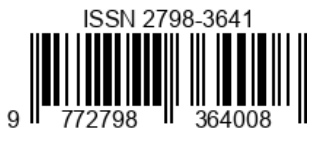PENERAPAN TERAPI GUIDE IMAGERY RELAXATION UNTUK MENURUNKAN SKALA NYERI PADA PASIEN CEDERA KEPALA RINGAN DI IGD RSUD KARAWANG
Keywords:
Guided Imagery Relaxation, Pain, Mild Head Injury, Emergency Department, NursingAbstract
Mild head injury is one of the most common cases in the Emergency Department (ER) and is often accompanied by complaints of headache due to trauma. Pain that is not properly managed can cause tension, anxiety, and increase intracranial pressure. One effective non-pharmacological intervention to reduce pain is Guided Imagery Relaxation therapy, a relaxation technique that involves imagining a calming atmosphere to divert focus from pain. To determine the effect of Guided Imagery Relaxation therapy on reducing pain scales in patients with mild head injuries in the Emergency Department of Karawang Regional Hospital. This study used a pre-experimental one group pretest-posttest design. The sample consisted of 16 respondents who met the inclusion criteria. Guided Imagery Relaxation therapy was carried out for 10–15 minutes, with a gentle voice guiding the patient to imagine a peaceful atmosphere such as a beach or park. The pain scale was measured using the Numeric Rating Scale (NRS) before and after therapy. Data analysis was performed using the Wilcoxon test. The average pain scale before therapy was 5.81 and decreased to 2.75 after Guided Imagery Relaxation therapy. The Wilcoxon test showed a p-value of 0.001 (p < 0.05), indicating a significant effect of Guided Imagery Relaxation therapy on pain reduction in patients with mild head injuries. Guided Imagery Relaxation therapy effectively reduced pain in patients with mild head injuries in the emergency department (ED). This therapy can be used as a non-pharmacological intervention that is easily implemented by nurses to help patients self-manage pain.
References
World Health Organization. (2023). Head Injury Fact Sheet. Geneva: WHO.
Kementerian Kesehatan RI. (2023). Profil Kesehatan Indonesia Tahun 2023. Jakarta: Kemenkes RI.
Smeltzer, S. C., & Bare, B. G. (2020). Brunner & Suddarth’s Textbook of Medical-Surgical Nursing. Philadelphia: Lippincott.
Potter, P. A., & Perry, A. G. (2021). Fundamentals of Nursing (10th ed.). St. Louis: Elsevier.
Guyton, A. C., & Hall, J. E. (2020). Textbook of Medical Physiology (14th ed.). Philadelphia: Elsevier.
Hidayat, A. A. (2020). Metodologi Penelitian Keperawatan dan Kesehatan. Jakarta: Salemba Medika.
Rachmawati, N. (2022). Pengaruh Guided Imagery Relaxation terhadap Penurunan Skala Nyeri Pasien Pascaoperasi di RSUD Bandung. Jurnal Keperawatan Medikal Bedah Indonesia, 10(2), 44–50.
Yuliani, E. (2023). Efektivitas Guided Imagery terhadap Intensitas Nyeri pada Pasien Trauma. Jurnal Keperawatan Gawat Darurat Indonesia, 5(1), 27–33.
Black, J. M., & Hawks, J. H. (2020). Medical-Surgical Nursing: Clinical Management for Positive Outcomes. St. Louis: Elsevier.
Notoatmodjo, S. (2021). Metodologi Penelitian Kesehatan. Jakarta: Rineka Cipta.













